The Island
North Ronaldsay : A short introduction
North Ronaldsay lies at the north-east extremity of Orkney, separated from the nearest islands to the south by the treacherous, 5km wide North Ronaldsay Firth, and with open sea to the north and north-east as far as Fair Isle (40km away) and Shetland (80km away). The surrounding waters, with hidden reefs and dangerous currents, have claimed a terrible body-count in shipwrecks, particularly during the eighteenth century; and before the regular air service made getting to and from the island a simple process, it was a very difficult place to visit. Its remoteness and isolation from the rest of Orkney, though, have given North Ronaldsay a distinct cultural tradition.
Arriving on the archipelago by air, one of the first things you will notice is how remarkably low and flat North Ronaldsay and its nearest neighbours are, resembling the irregularly shaped pieces of an enormous jigsaw puzzle, breaking off and floating out into the North Sea. North Ronaldsay itself rises no higher than 30m above sea level, asymmetrical in outline with its jagged, rocky perimeter occasionally interrupted by the smooth crescents of stunning, sandy bays.

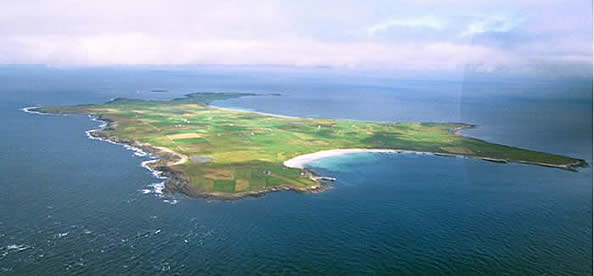
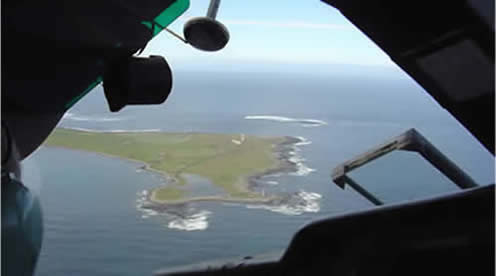
Two lighthouses at the north of the island are the most prominent man-made features, standing straight up tall out of the surrounding flatness like the last remaining pieces on a severely misshapen chess board. The new light, now automated, is the tallest land-based lighthouse in the country; the old light, long extinguished, is shorter and topped by a distinctive stone ball.
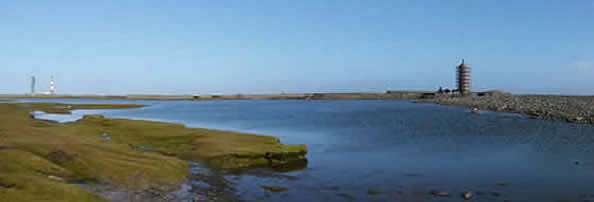
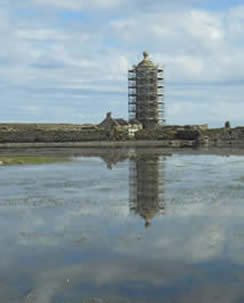
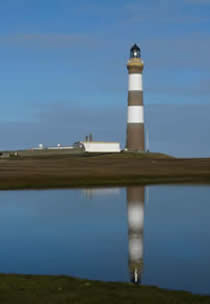
The croft houses of the island are sparsely scattered, with no obvious central concentration, and the interior of the island is divided into numerous crofts by a complex network of dry stone walls (known in the local vernacular as dykes). The current resident human population is only about 60, but the many small croft houses, a lot of which are now ruined, are vestiges of a time when the island’s thriving kelp burning industry supported over 500 people. Famously, a 13 mile long dry stone wall, the sheep dyke, runs all the way around the coastline to keep the 3000 or so unique seaweed-eating North Ronaldsay sheep out of the farmed land.
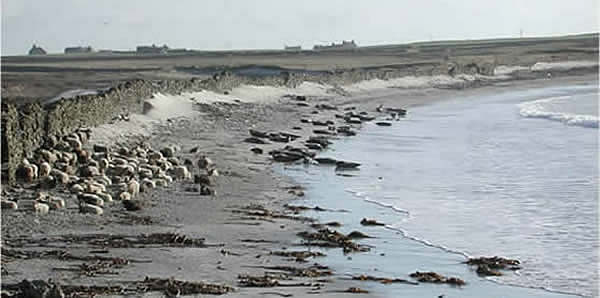
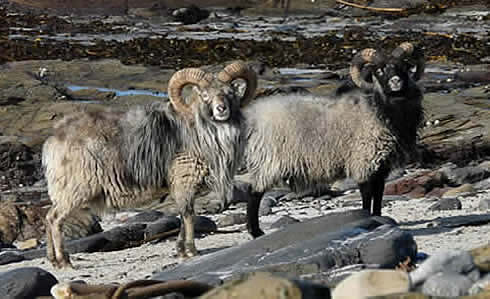
There are several freshwater lochs on the island: richly vegetated eutrophic water bodies are surrounded by dense iris beds; a couple of oligotrophic pools support little vegetation and remain mostly open water all year round. There is no tall vegetation away from a small number of gardens where determined islanders have managed to defy the unfavourable climate to grow a few sycamores or willows in sheltered corners. Holland House, the largest property and the seat of the island’s laird, is much the biggest of these gardens, and is the observatory’s primary bird ringing site.

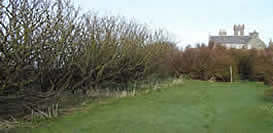
Thanks to the ameliorating influence of the warm Gulf Stream, the climate is not as harsh as might be expected for an island at such a northerly latitude and winter temperatures are comparatively mild. Exposure to the warm currents, however, must also mean exposure to strong winds and rough seas, which can be a spectacular experience here at times.
North Ronaldsay’s exposed position and rich wildlife habitats make it ideally placed to receive a diverse array of migrant birds as they arrive in Britain from their journeys over the North Sea. The island’s potential as a place to observe and study bird migration has been renowned since the late nineteenth Century, ultimately leading to the establishment of the bird observatory in 1987.
